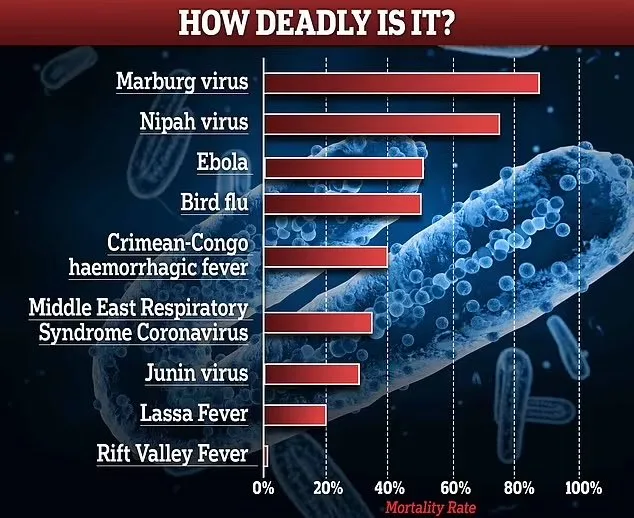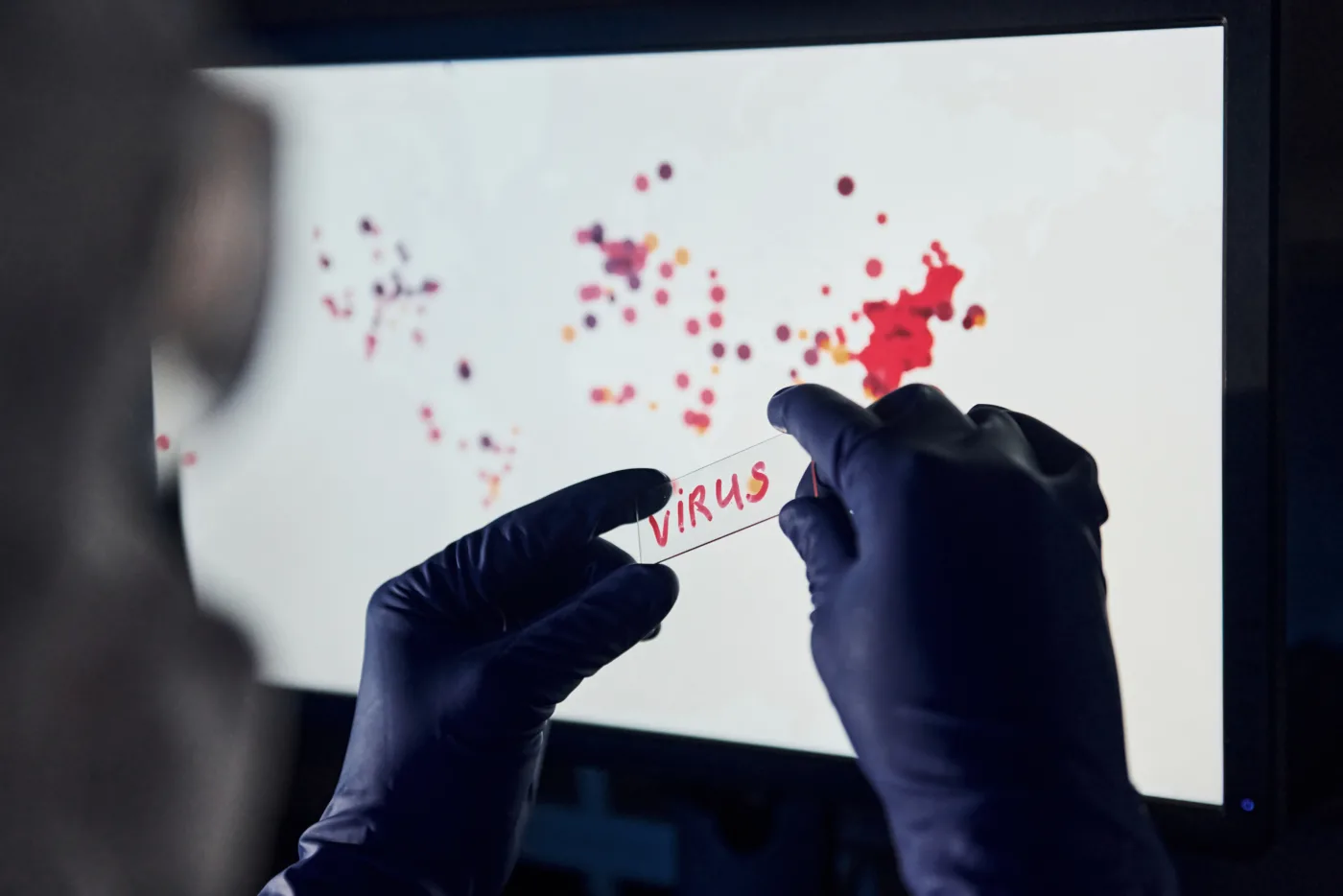On Wednesday, October 2, 2024, Hamburg's main train station became the scene of an alarming incident when two passengers on a train coming from Frankfurt showed symptoms of infection with the extremely dangerous Marburg virus - which is the deadliest virus. The virus, which is related to Ebola and causes severe fever, vomiting and bleeding, has an extremely high mortality rate, which can reach as much as 88 percent.
The story began when a 26-year-old German medical student who had recently returned from Rwanda, together with his girlfriend, began to show signs of a serious illness that could indicate the most deadly virus - Marburg. Both developed flu-like symptoms during the train ride from Frankfurt, and one of them even vomited, which raised the alarm for them and the surrounding passengers. The student, who had previously been in contact with a patient infected with the Marburg virus in Rwanda, suspected the worst and called the emergency services.
Reports indicate that the student who caused the panic at the Hamburg train station was in contact with a patient who was later confirmed to be infected with the Marburg virus during his stay in Rwanda. It was this contact that raised suspicions that the student and his girlfriend might be infected after they started showing flu-like symptoms while traveling by train from Frankfurt.
Members of the fire department, equipped with protective suits, reacted immediately and, with the help of the police, evacuated the train and closed two railway tracks at the main station in Hamburg. The authorities reacted quickly as the fear of an outbreak of such a dangerous virus was understandably high, especially given the recent news of the outbreak in Rwanda, where eight people have died and 26 cases have been confirmed to date.
Marburg virus: What do we know?
The Marburg virus belongs to the same family as the Ebola virus, the Filoviridae, and causes very similar symptoms. The disease begins suddenly with a high fever, severe headache and a general feeling of malaise. Within a few days, however, the symptoms worsen with profuse diarrhea, abdominal pain, nausea and vomiting. In severe forms of the disease, bleeding can also occur from various parts of the body, which is often life-threatening, especially if the disease progresses to shock and severe bleeding. The case fatality rate in outbreaks of this virus varies between 24 % and 88 %, depending on rapid identification and care of patients. Currently, there is no official vaccine or drug to treat the Marburg virus, which makes the situation even worse.

Suspected infection and preventive measures
After the first alarm, both passengers were immediately transported to the University Hospital Eppendorf in Hamburg, which specializes in the treatment of tropical diseases. Their luggage was held in quarantine to prevent the possibility of further infection. They will be examined at the hospital and additional tests will be carried out to determine whether they are really infected with the Marburg virus or whether it is just a false alarm.
#BREAKING#MARBURG virus in Germany.#MVD
A medical student who was treating a patient with Marburg virus in Rwanda develops symptoms upon his return to Germany. He was removed from a train. His partner was also symptomatic.
There is no deadlier pathogen than Marburg. Let us… pic.twitter.com/QIBSdofoFl— Dr. Richard Hirschson (@richardhirschs1) October 2, 2024
In the meantime, authorities began tracking all passengers who had been in contact with the suspects on the train. About 200 people traveling on the same train line were examined as part of preventive measures and data collected for further monitoring. Although the authorities initially closed the area around the two train tracks, they reopened the station after a few hours when the situation calmed down a bit.
Rwanda virus outbreak and global risk
The current outbreak of the Marburg virus in Rwanda is one of the most worrying in recent times, as the disease spreads rapidly, especially among healthcare workers who come into contact with infected patients. The virus is transmitted through direct contact with infected body fluids such as blood, saliva, sweat and faeces, which poses a significant risk to those caring for patients without appropriate protective equipment. The World Health Organization (WHO) has assessed that the risk of the virus spreading is very high in Rwanda and neighboring countries, as most cases have been recorded close to the borders.
Despite the fact that the spread of the virus is still a low risk globally, the incident in Hamburg highlights the danger of the rapid spread of deadly diseases through international travel connections. The authorities are therefore particularly careful in checking all travelers coming from the affected areas and are closely monitoring the health status of anyone who has been in contact with infected persons.
No panic, just a high level of caution
Although the situation in Hamburg has raised fears of the possible spread of the deadly virus, experts are urging the public to remain calm. There has been no confirmed infection yet, and all necessary preventive measures have already been implemented. As always in such cases, rapid isolation and contact tracing is key in limiting the spread of the disease.

Unfortunately, there is no vaccine or cure for the Marburg virus yet, but research and clinical trials are underway that could lead to breakthroughs in the future. Meanwhile, effective measures, such as timely isolation of the infected and appropriate protective equipment for medical personnel, are crucial to prevent the spread.
Conclusion
The incident at the Hamburg train station highlighted the importance of a rapid response to potential outbreaks of infectious diseases. Although it has not yet been confirmed whether the two passengers are actually infected with the Marburg virus, the incident highlights the importance of international cooperation and preparedness for health crises. The Marburg virus is dangerous and its spread can be prevented by taking appropriate measures. Hopefully, quick preventive measures in Hamburg will be enough to control the situation and protect public health.
Sources:
- Politics: Deadly virus scare closes tracks at Hamburg rail station.
- Aviation24.be: Marburg virus scare at Hamburg Central Station: Emergency services respond to possible infection.
- BreezyScroll: Marburg virus: Passengers with 'deadly virus' force emergency lockdown of a major German station.
- WHO: Marburg virus disease– The Republic of Rwanda.





